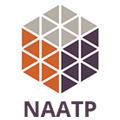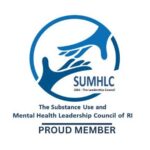Twelve Points of Light by Teresa Cobleigh
Across America, communities are tasked with meeting the opioid crisis head-on. Will America’s communities have a strategic vision and blueprint that will yield results?
Legislators and State Attorney Generals have advocated for funding, and it now trickles down from federal to state coffers to a municipality by you. Communities will need strategies to address the crisis and a roadmap to guide decision-making and prioritize funding. Opportunities to build infrastructure and identify gaps may come only once. Communities must also start with an understanding of the disease and what is happening at this stage of the crisis. They must be able to prioritize funding, separating the must-haves from the would-like-to-haves.
Some say addiction is addiction, and it doesn’t matter the substance. While there are general principles for understanding addiction as a chronic brain disease, there are different relapse rates for different substances, medication for some and not others, and different recovery scenarios for each.
The fentanyl-addicted brain is not wired for rational thought. It does not get itself into treatment after hitting bottom. It does not consider the law. It does not respond to tough love. It is in survival mode and within the grip of the disease, one where the stakes mean life or death, and the timing is imminent. Exposure to fentanyl without tolerance to opioids — as in cases of first use and relapse after detoxification — is often synonymous with overdose and death.
Given the addiction crisis has changed in fundamental ways, we believe the following:
1. There is an urgency to address primary prevention, harm reduction, and public awareness as well as research and standards to keep current with conditions on the ground.
2. Our current treatment model is mismatched with the needs of recovery — the brain takes an extended period to recover, beyond the time horizons of most affordable treatment options in the current marketplace.
3. The high probability and danger of relapse necessitates coordination, warm handoffs, safety protocols for smooth transitions, and accountability for following them; and
4. Interventions are lifesaving and need to happen whenever and wherever possible.
Communities can and should learn from each other. What is working or not working in Seattle may be a lesson learned for other communities. What is proposed in LA may be a pilot for us to watch. What is being argued in another state’s legislature can inform the next. Other countries offer alternative approaches, and we must glean what is relevant and workable for our own.
Here are “Twelve Points of Light” to consider as we address this crisis on the community level:
Prevention
1. Primary Prevention – Expansion of in-school mental health education (CASEL social-emotional learning skills) and in-school programming which engages at-risk students to “meet them where they are”
2. Harm Reduction and Awareness Campaigns — accessibility of naloxone and buprenorphine, family support, disincentives for high-content THC where it is legal
Quality and Affordable Access to Care
3. Research and development of medical standards that are current and relevant to evolving conditions and needs, e.g. polysubstance use and co-existing disorders
4. Best practices in the treatment industry that follow evidence, with greater accountability
5. Truth in advertising – To be considered “dual diagnosis” or “co-existing disorder” facilities or offering “personalized care,” there must be competency and expertise available to handle a myriad of mental health issues
6. Greater emphasis on coordinated mental health – with competency standards or coordination with qualified outside psychiatrists while in treatment
7. Focus on safety — Safety protocols at treatment facilities, sober homes, and jails against abrupt administrative discharge or release. Warm handoffs during transitions. Use of injectable buprenorphine before discharge.
Leveraging Opportunities for Intervention
8. Easier interventions—defining “imminent risk” for substance use disorder to include a high likelihood of relapse on opioids resulting in death, thereby facilitating providers to use a temporary hold for a client’s safety. Maximizing other opportunities to intervene at school, with the law, in court, with community organizations, and in the ER.
9. Justice interventions – Drug courts, diversion, and mandated treatment much earlier (see model legislation). Training of peace officers in mental health and SUD.
10. SBIRT (screening, brief interview, referral to treatment) training requirements for family practitioners and school prevention counselors
Extended Care and Recovery Support
11. Peer Recovery – More wide use of peer recovery specialists with connections in ERs and jails to encourage treatment
12. Stable Housing – Safe temporary and permanent housing with mental health and substance counseling. Safety protocols and warm handoffs for sober homes. Housing that supports multiple pathways and alternatives under the care of a doctor.
Herren Project has been combating addiction since 2011 and brings a national perspective. We understand addiction as a multifaceted problem that involves the trifecta of individual, family, and community. We consider both risk and protective factors that determine recovery capital and resilience, and we provide services that are designed to strengthen all components. If you would like to partner with us to offer services to your community, please reach out to info@herrenproject.org.






